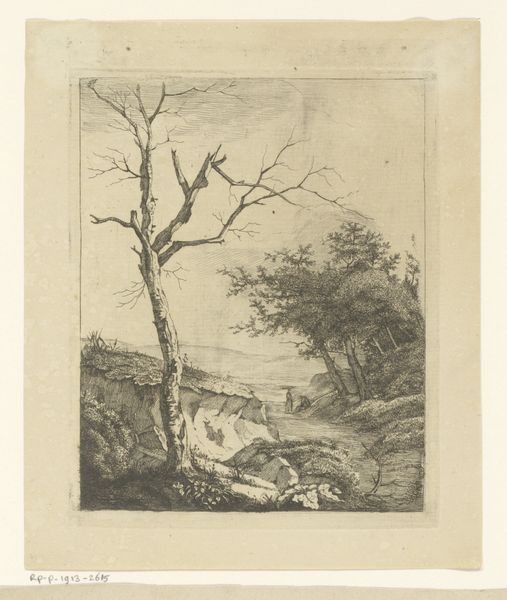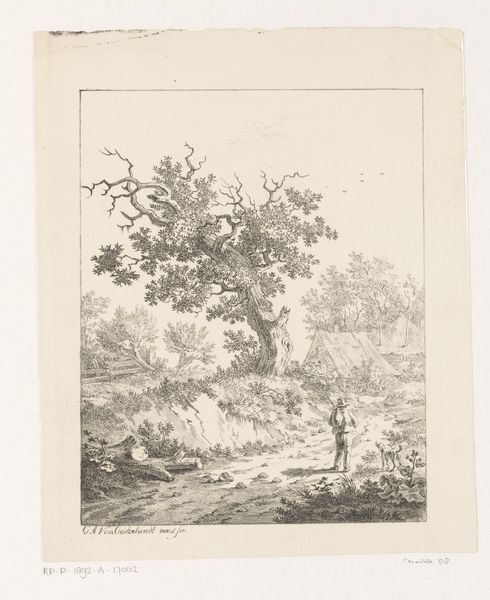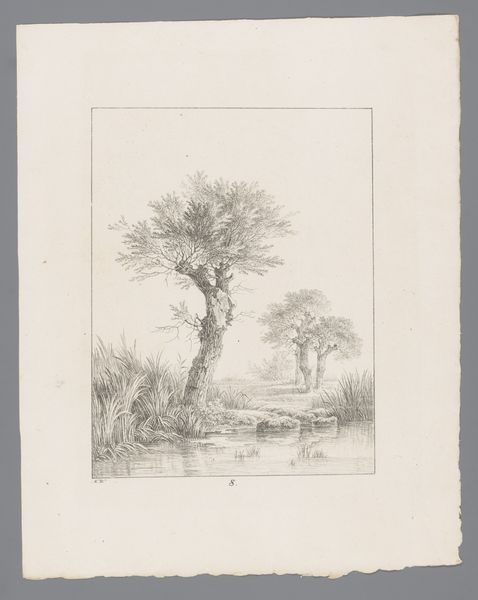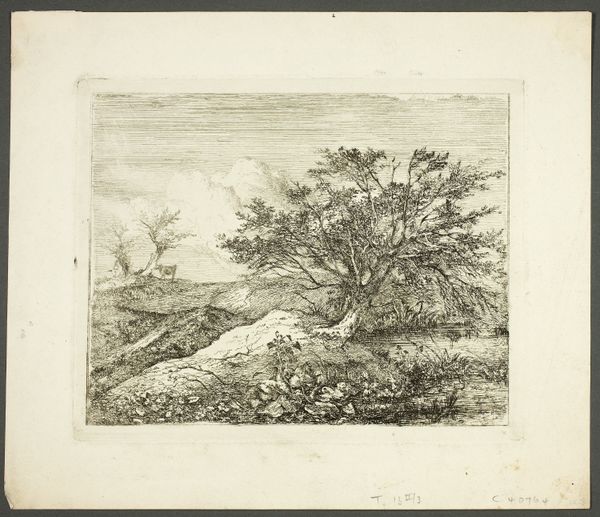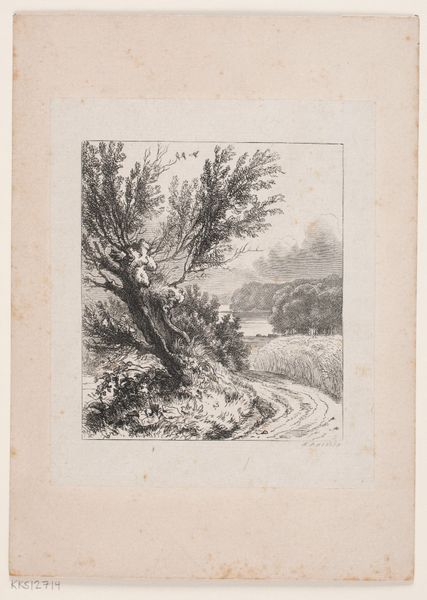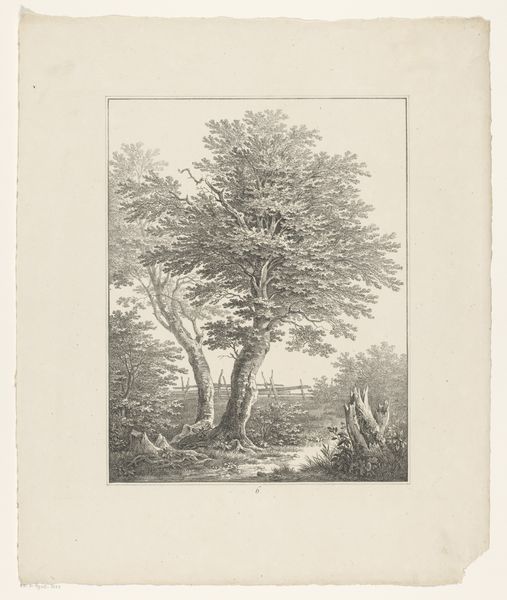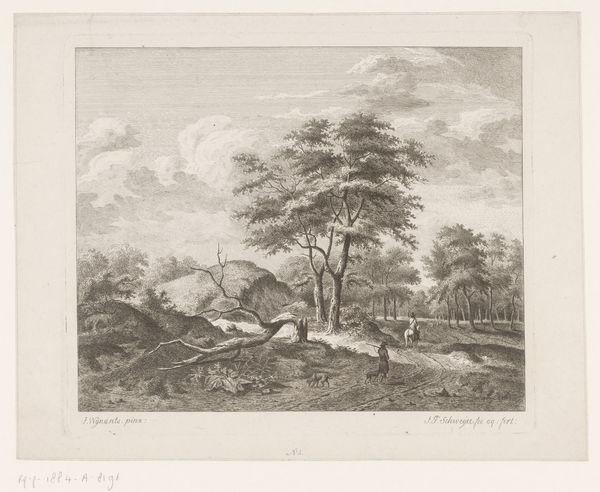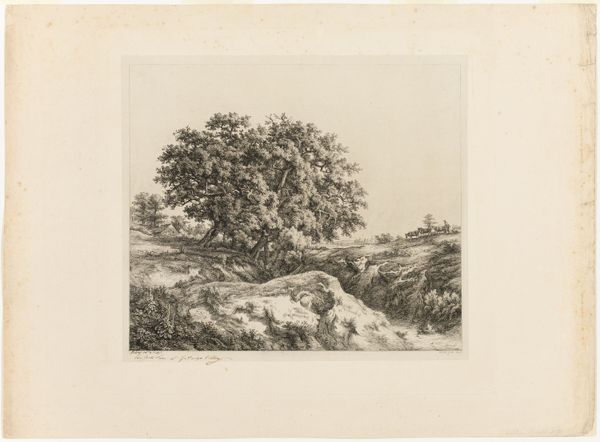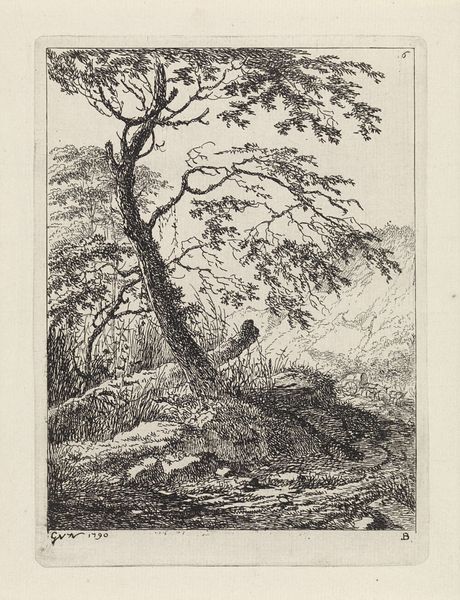
drawing, print, engraving
#
drawing
# print
#
landscape
#
engraving
#
realism
Dimensions: height 538 mm, width 454 mm
Copyright: Rijks Museum: Open Domain
Curator: Editor: So, here we have "Boom en stammen," or "Tree and trunks" by Adrianus van der Koogh, created in 1826. It’s an engraving of a barren landscape with striking trees, seemingly caught between life and death. What do you see in this piece? Curator: I see an articulation of a very specific social tension inherent in 19th-century Dutch landscape art. These isolated trees aren't just representations of nature; they're symbolic of the changing relationship between humanity and the environment. What is the narrative that these visual forms create about Dutch culture? Editor: So, are you suggesting that the barrenness could be read as commentary on industrialization's impact? Curator: Precisely. And further, consider the socio-economic structures in the Netherlands at the time; whose voices were amplified through landscape art? These picturesque renderings often obfuscate the exploitation embedded in land use and ownership. Can we disentangle aesthetic appreciation from its inherent social implications? Editor: That's a perspective I hadn't considered. I was focusing on the purely aesthetic quality. Curator: I see van der Koogh grappling with themes of ownership, resources, and control, which became vital subject matter as societies worldwide continued to become less connected to land. It forces us to consider whose perspectives are historically privileged in art. What is seen versus what is unseen? Editor: It’s fascinating to think of this landscape not just as a pretty scene but as a record of social and political dynamics. Curator: It truly opens up new perspectives for understanding art’s place in culture. Editor: I will never see landscape art the same way. Thank you!
Comments
No comments
Be the first to comment and join the conversation on the ultimate creative platform.
